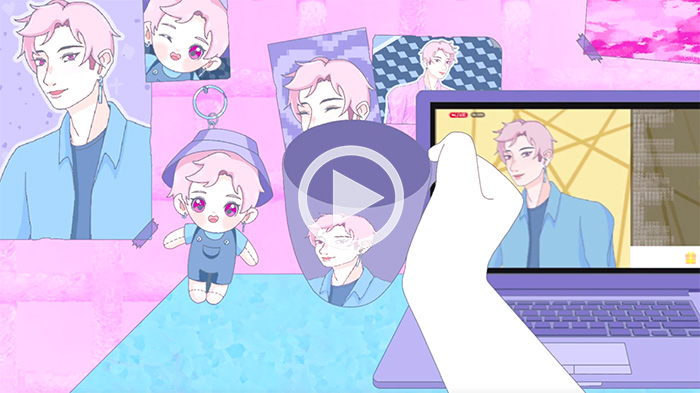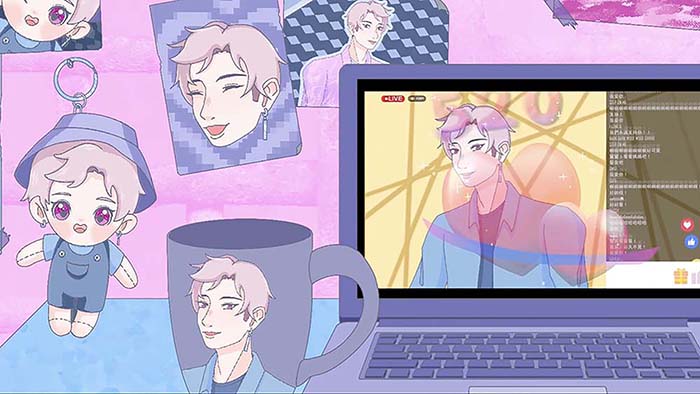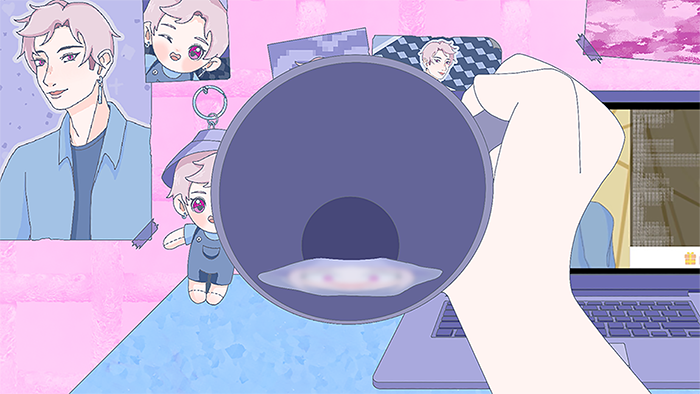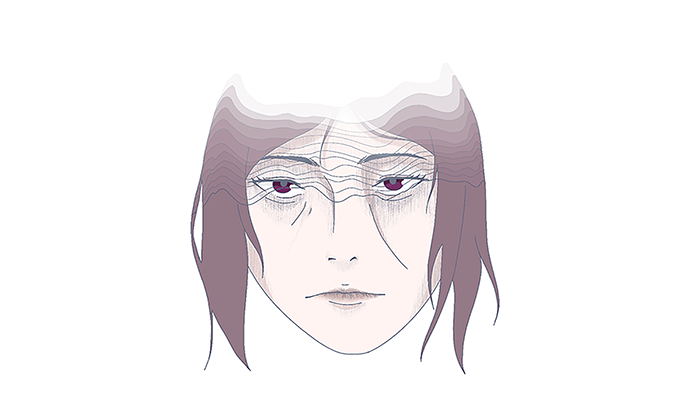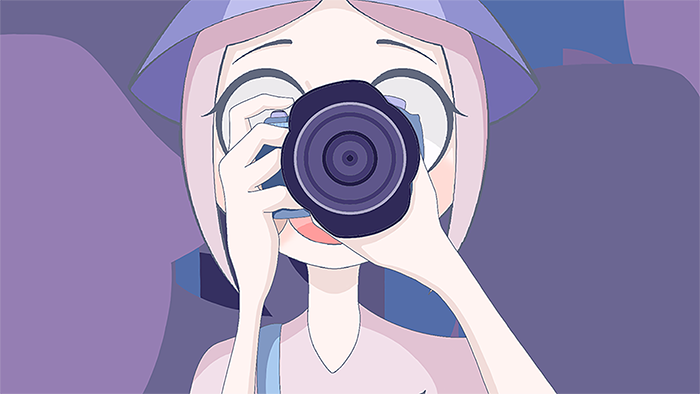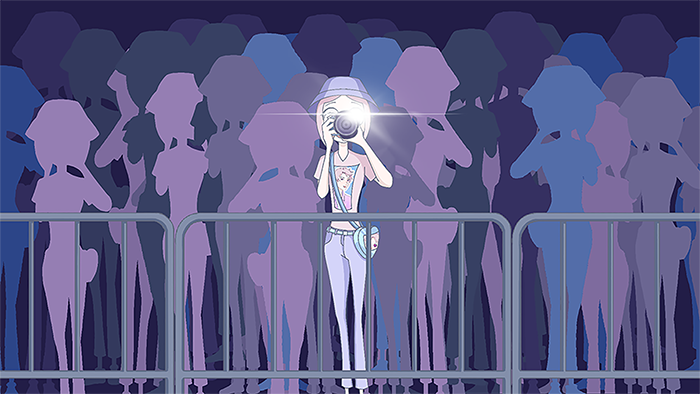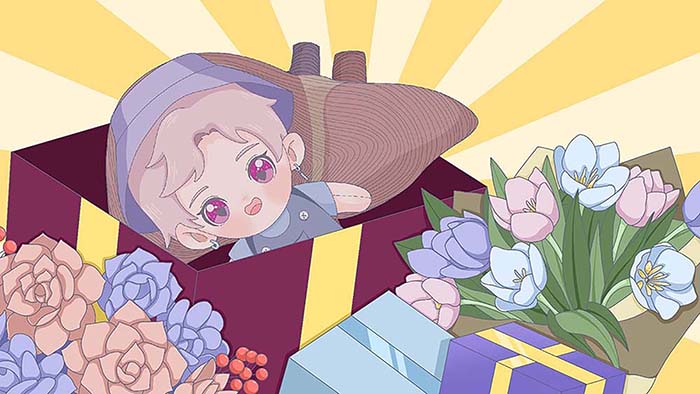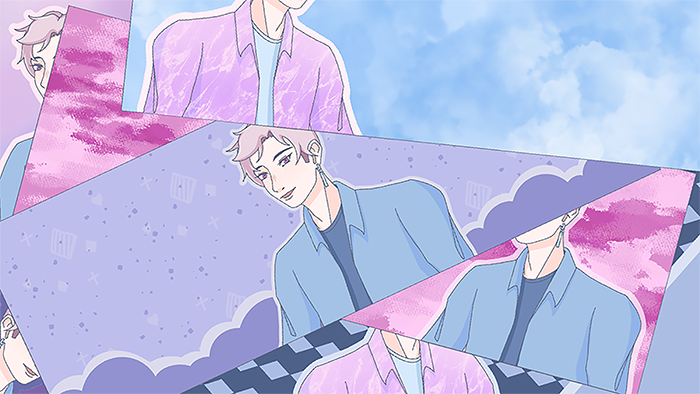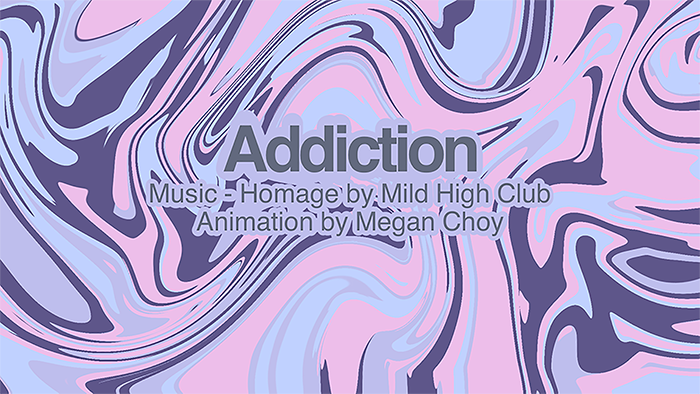



在毕业课题“ReTurn”中,我延续了对自己之前课题的兴趣—幻觉与药物的关系。我在调研中了解到吸食不同毒品后瘾君子的身心变化,以及他们会产生的幻觉。在此过程中,我发现一些瘾君子对于毒品的态度和一些狂热的追星族对其偶像的态度有一定相似之处。于是,我决定以动画的方式,融合有趣的画面来表现两种上瘾之间的联系。 画面上,我根据资料描述的一些吸毒后所看到的幻象,制作了迷幻的场景以表达「疯狂追星族」的一些行为,讽刺现今社会上因过度痴迷偶像而做出过激行为的人。动画中融合了卡通和写实两种画风,以抒发主角内心的想法与现实生活中的差距。在配乐的选择上,我则选用了一首迷离的歌曲以衬托出主角难以投入现实生活,终日浑浑噩噩、神志不清的生活状态。
During the conceptual development of this piece, I was inspired by one of the themes of my last piece, drugs (or psychedelics). I wanted to showcase the persistent 'Return' to celebrities in fanatics, similar to relapses in drug addictions. In the research stage, I had come to learn a lot about different mind-altering substances, including the various visual phenomena they induce, psychological and physiological changes to the body and mind after use, and applications of psychedelics. In this process, I drew a connection between the obsession of addicts over the substances they abuse and the attitudes and mindsets of some celebrity fanatics. By blending the elements and themes of drugs and celebrity worship, the idea for this animation was born. In terms of imagery, I referenced some documentation of strange visual phenomena caused by mind-altering substances to create various psychedelic compositions, as an analogy to express the acts of extreme celebrity worship, as a means to satirize the outrageous and obsessive actions of some idol fanatics in modern society. The animation employs two distinct art styles: a cartoonish style and a more realistic style, which symbolizes the vast differences between the protagonist's internal beliefs and actual reality. In terms of music, I have selected a song with psychedelic characteristics to emphasize the clouded mind and impeded judgment of the protagonist.
